Competition Tapering
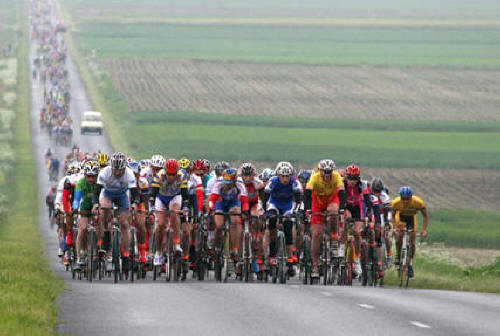
How do you make sure you're at the front of this
bunch, not the back?
Jacques Bossis ~ Charente
France
You've trained hard, prepared well, got your weight down, power up and you are as fit as you've been all year. Your key event is just around the corner; so what now?
When is enough, enough? When is too much, too much? And when is the right time to throttle back to be mentally and physically fresh for your big day? We'll try and answer most if not all these questions in this article. But if you're stuck for time, the short answer is; it depends!
What is a taper?
A taper is considered to be a period of time where the volume
of training is reduced in the days or weeks leading up to a
key event to prevent training-induced fatigue from impacting your
performance on the day.
It isn't done for every event just the one or two a year that you
have pre-determined to be your key objectives for peak performance.

The key to a well executed taper period is finding the best balance between recovery and sustained training.
A structured taper will allow the body to recover from the accumulated fatigue of hard training without reversing the affects of that training's adaptation.
The best training, and form, in the world can all be wasted with an ineffective taper period. Get it right and you'll fly on the day, get it wrong and you'll not be competing to your full potential
Pump Up The Volume?
Most definitely not! You'll have noticed from my earlier statement
that only the volume of training is reduced during a
taper period, not the intensity. Some people lose the full
advantage of a taper period because they reduce both volume and
intensity. Ensure you differentiate between the two and success is
at least a step closer.
Here we'll try to discuss the merits of a taper and the advantages it could bring if you allow yourself to follow a few simple rules and guidelines. I say, "allow yourself" because it still surprises me how many people ride long and hard up to two days before a key event.
They become nervous as the big day approaches, and believe they'll lose valuable fitness if they don't stay at full throttle. You can't get any fitter in the last week before a key event; it's a fact!
Remember the FIT Principle?
Good training is all about manipulating three critical factors to
get the maximum return on your training investment. The
Training Methods &
Success Planning factsheets explain these factors in more
detail.
To cut a long story short, a good training programme relies on adjusting the Frequency, Intensity and Time (duration) of your workouts, to physiologically stretch your body, to create a progressive and sustainable adaptation to your training load.
The key word is "sustainable." You can't overstretch your body indefinitely. You need to schedule active rest, recovery, and adaptation periods in to your training plan, then finish it off with an equally well planned taper period.
A taper is a cross between a rest period and an activity period. You still stress your body before a key event, you just do it for a much shorter activity period, which gives you a longer recovery period. You get to "rest" rest, after your key event!
To make the point absolutely clear; tapering isn't resting! Please don't confuse the two.
 How Long is a Taper?
How Long is a Taper?
As I said above, and will continue to say throughout this factsheet,
and probably the whole website, it depends.
If you've spent 8 months training for an Iron Man event, you might need to take a three week taper.
A full on sportive like the Marmotte, L'Etape or Quebrantahuesos would probably require a 10 day taper; a key objective, 25 mile time trial, might require just a 7 day taper.
It really is horses for courses and requires a little trial and error to get it just right. The only problem is, you don't want to be "erroring" when preparing for your key event of the year. So just like you practice every other facet of of our sport, sprinting, climbing, attacking, etc, make sure you practice tapering, until you get it right.
But you have to start somewhere, and to be honest, I've never heard of anyone saying they tapered too much!
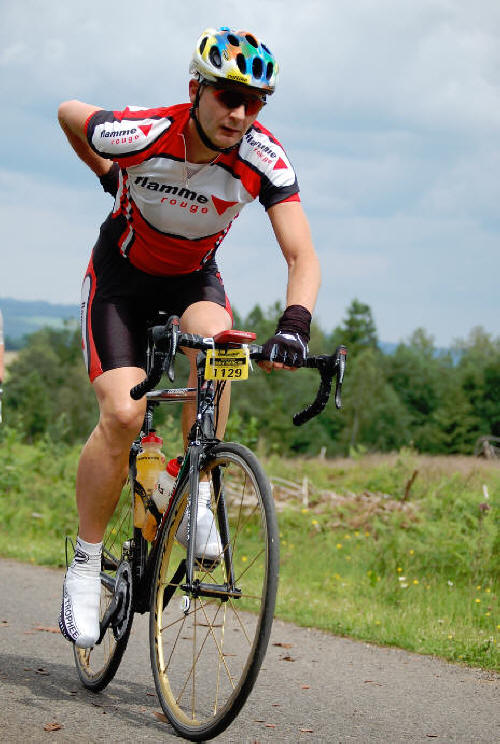
Get the taper right and you'll be doing these things with one hand
behind your back!
Gran Fondo Eddy Merckx ~ deep in the Ardennes...
The Quantifiable Benefits
Again, there is a key word in the heading above; quantifiable. These things have been measured by clever people with clever stuff;
there is loads of scientific research to back these concepts up. So it's
worth paying attention and at least giving the next paragraph or so
the benefit of the doubt.
Research suggests that a well planned and executed taper can lead to an increase in oxygen uptake, an increase in muscle glycogen levels and an increase in an athlete's strength and power.
Some studies have measured a 3% increase in power, and an increase in sustained endurance, over control groups that never undertook a pre-defined taper period. Which is hardly surprising!
Now I can hear a few of you scoffing at 3%. But consider this...
Everyone I know wants to target the hour for a 25 mile time trial. It's the place where everyone wants to be and it's difficult to hit for the "normal" weekend warrior, cyclist, especially here in twisty, hilly, Jersey.
Most "normal" cyclists (those with a job, a family, and a life!) end up around the 62 minute mark in Jersey for a 25 mile time trial mainly due to the 30 or so corners and junctions on the courses.
A well executed taper, giving a minimum of 3% improvement, would knock two minutes off that time! Two minutes without having to train any harder! How good is that? Rhetorical question...
There is no Template
 Just
as each individual reacts differently to the same training stimulus,
the principle follows for tapering. Don't do what your mates do, or copy
a schedule from a book.
Just
as each individual reacts differently to the same training stimulus,
the principle follows for tapering. Don't do what your mates do, or copy
a schedule from a book.
You cannot write a cookie cutter template taper that works for everyone. Each individual needs to find the taper that works best for them.
Having said that, there are at least some indisputable rules of tapering that have to be followed.
▼ Frequency has to remain
around 80% of previous training patterns.
▼ Intensity has to remain
at or above that of competition level.
▼ Time (volume) has to decrease by at least 50-60%.
So, if you're training five times a week, you don't cut back to two sessions, you drop to four.
If you have a power meter you know exactly, from previous race data, where you need your power levels to be. So your intervals need to be at race pace, plus some! But for less time, with bigger recoveries.
And as for time, if your weekend endurance ride is four hours, you cut it back to two to two and a half hours. These are all starting points for you to work from, to find what works for you.
As I said, there is no template, and these figures aren't prescriptive. But they do make excellent starting points against which to prove your theories when you taper for one of your less-important objectives.
The chart below give a pictorial illustration of an "in-season" training profile rolling up to a key competition.
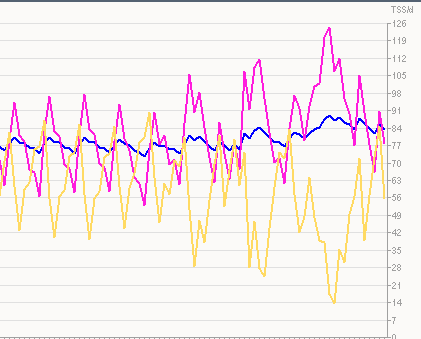
The pink weekly training loads go up, as the yellow "athlete freshness" goes down. Just right of the middle are two big pink training blocks, with a little recovery week in between.
You can see the yellow "tired line" drop, rebound, then drop again. The blue "fitness line" rises upwards, before a final huge overload period where the pink line goes to 126, and the yellow line drops to minus 40 (scale cropped off).
The taper then begins and the yellow line rises, to signify a recovering athlete, and the blue line flattens, to show no more training gain; there may in fact be a tiny loss. But it's a price worth paying.
When peers are competing, a fit, fully fresh athlete will always beat a fitter, tired athlete; always.
At the far right, where all the lines meet together, is competition day; or as we like to call it, "Success Day".
Nutrition
The taper period isn't exclusively used for your physical recovery and
adaptation. Nutrition is as key to your training and tapering
as any physical activity you may undertake.
Your performance on the day relies heavily on the food you eat the week before the event. Just because you've cut back in one aspect of your training doesn't mean you can let discipline slip in another.
Eat the correct food in the correct quantities and at the correct time. Keep your glycogen levels stocked by eating little and often. Don't eat three big meals a day, eat five smaller ones and make sure you remain hydrated at all times.

Don't compromise your whole preparation period by neglecting this vital piece of your competition jigsaw. And don't underestimate the psychological effects of treating yourself to a dessert in the taper period.
You've trained hard for a prolonged length of time and are now as fit as you'll get. One small dessert isn't going to hold you back. Reward yourself for your training effort before the big day; but not the night before!
It all adds to the confidence that you are as well prepared as you can be and are looking forward to competition day.
Planning Your Annual Training
This next section provides empirical evidence of a controlled,
structured, season long build and taper, planned in October and
executed in August.
In the table below you can clearly see, the overload and taper principles at work, from my actual SRM race and training data files. The chart shows an average road ride for each month, and actual competition rides, with their Training Stress (TS) scores, Intensity Factors (IF) and "load value" (TS x IF).
The first red block is September's La Ronde Picarde sportive, at the back end of that year's competition period. 135 kms, and a "load score" of 246. A nice way to end the season, with a top 20 placing.
Season over, I backed out of the seaon by recovering in October with short, easy, steady-state 50k rides with a tiny Training Stress scores; just riding around smelling the flowers.
I planned (and rode) the rest of the season in progressive (Green, Orange Red) overloads and distances to peak for June and again in September. You can see the Sarthe & Bossis rides were shorter but more explosive to give an overload for my two key events, the Pyreneene and the Hubert Arbes which took place a week apart in June.
After a July back-off, so I could watch the Tour, regroup and refresh, I then began my end of season build up with Courir Pour La Paix in August.
I tapered properly for this event and ended up just 2 minutes behind the comeback kid, Bernard Hinault; yes that one! An attack at 80k saw me go backwards and lose two minutes on the run in for home.
My final and key event of the year, and the most "stressful" was the Lapabie in September. Once that was over I went back to October's 50k wind-down rides. Here's a full season at a glance with the peaks, the troughs and the tapers.
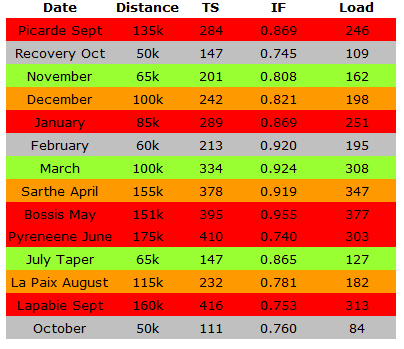
The ebb and flow of a season in
Europe
and how to prepare your year for two peaks.
You can see from the actual training figures above that Training Stress and Intensity Factor build each month to give a controlled, progressive, sustainable overload. Ideally, your season should be planned the same. As should your run up to your key events.
You don't need a power meter to do all this. You can gauge the "hardness" of your training and events on experience, distance, climbing and possibly average speed.
Don't over complicate things, I can because I'm sad! This is a very simple concept that can be as easy or as complicated as you wish to make it. Keep it simple!
Psychological Benefits
Do not underestimate the psychological benefits of a taper period.
If a taper is carried out correctly you can actually feel yourself getting
stronger as your key event approaches.
The mental lift being fit, and fresh, brings is enormous. To be in with a chance of performing well on your chosen day you need to peak both physically and mentally. If one of these factors is just slightly off song you could compromise your chances of successfully fulfilling your goal.
It doesn't matter how strong you are, if you're not physically, and mentally fresh, you could be handicapping yourself against less powerful but mentally more attuned athletes. So refresh your brain as well as your muscles and the job's a good 'un.
Common Sense Touches
The taper period is an ideal time to concentrate on skills, techniques and
strategies. Don't switch off just because you are tapering.
During your heavy training, as fatigue occurs and the emphasis is on completing intervals or sets, it's all too easy for technique to drift as you fight for that last ounce of race-winning fitness.
Use the taper period to concentrate on doing the small things right, with ruthless efficiency. Don't drift just because the sessions are easier; use the time to sharpen your skills and enhance your awareness.
If you train in the evenings, due to work or family commitments etc, but your key event is in the morning, try to use the taper period to train at the same time of day as your key event. This will allow your body to adapt to the environment and conditions in which you will be competing.
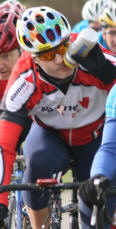 As you train to a
lesser level, make sure you adjust your nutritional strategy accordingly. It would be a shame if you put on a kilo or so during your taper period
because you forgot to throttle back on your carb intake!
As you train to a
lesser level, make sure you adjust your nutritional strategy accordingly. It would be a shame if you put on a kilo or so during your taper period
because you forgot to throttle back on your carb intake!
Also, remember that fluid replacement and balance is just as crucial in a taper period as it is in an activity period. Don't get to your key event chronically dehydrated!
If you're competing away, or at home, save your sunbathing until after the event. Sitting in the sun the day before a key event may help with your tan but it isn't conducive to optimal hydration levels. Common sense, but I've seen it done.
Also, if you've got new kit or nutrition products don't save them all up for the big day. Test them during your taper period. It's no use having a brand new pair of race shoes for the big day if the cleats are misaligned or your new shorts have a seam just where you don't want it!
Test your kit in the taper period and if you have new tyres get them scrubbed in before you go flying up the road. Literally!
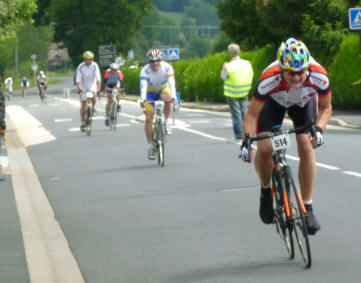
The Message
Each athlete and each cycling discipline requires differing combinations
of physiological, psychological and technical abilities.
Therefore, the same athlete will require differing tapering strategies for differing events. A taper that worked for a 180k sportive isn't the same one to use for a ten mile time trial.
And differing athletes will require different tapers for the same events. Find what's best for you in your chosen discipline, nurture it, test it, and protect it. Don't get distracted on the day by doing what your mates do!
No one got to a race fatigued because they recovered too much the week before a key event. If in doubt err on the side of caution and do less. Go for a ride, and when you feel good, go home!
Sometimes it's that simple. A while back I saw someone go on a 40 mile club run, or Saturday Race as they're know here, contest the last mile dash to the coffee shop, and give it a big sprint at the end looking for line honours. Thought nothing of it.
The next day I see them half-way down the results sheet for our Island 50 mile Time Trial Championship! What on earth were they thinking? Did they really believe they'd get a fast time with a heavy workout and sprint the day before a key event? Maybe they did.
Train hard, taper well, realize your potential. It's that simple.








